The Views
From a boat, Ilha da Queimada Grande might look inviting. Due to its rainforests, it gives the impression of a jungle paradise, and its beaches look like great places to spend some hours. It’s 66 degrees Fahrenheit in winter, and 82 degrees in summer may seem ideal too, but you’ll quickly find out why this isn’t quite so…


Things don’t become any clearer when you land on Ilha da Queimada Grande. The sound of the waves crashing on shores is not ever too far away, and everywhere you look, there are thick foliage and outcrops of rocks. However, one of the world’s most dangerous predators hides in this magnificent scenery.
The Predator
This apparently peaceful paradise is actually known as Snake Island. People have said in the past that this island was home to hundreds of thousands of snakes, and even though these days that number is far lower, there are still a lot of snakes living there—the reason? The action of an even more vicious predator.
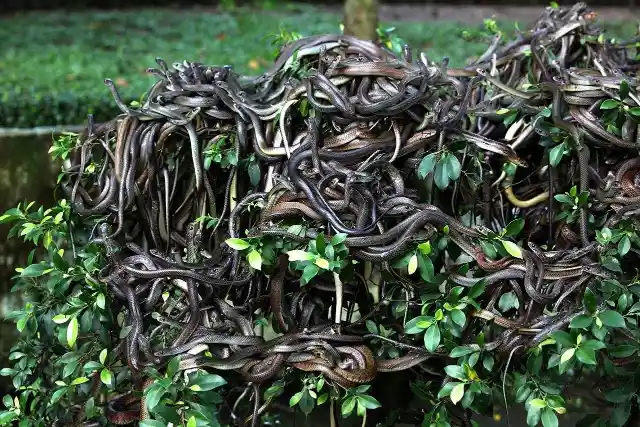
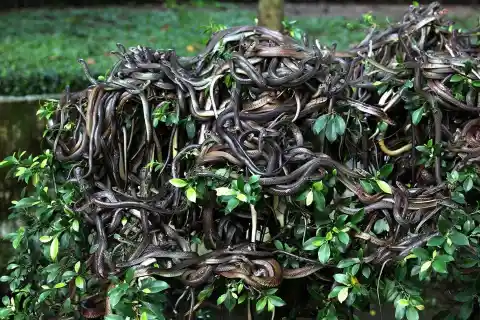
Among all the snake inhabitants of the island is the dipsas albifrons, which is no danger to humans but is a lethal enemy of snails, which are the base of its diet. But there are more than a thousand golden lancehead vipers alongside this snail-eating one. And these are actually very dangerous to humans.
The Golden Lancehead Viper
The golden lancehead viper is a member of a group of snakes that are named after the shape of their heads, the bothrops genus. The ones found on Ilha da Queimada Grande are distinguished by the color of their bellies. The golden lancehead viper is only found on this island, even though there are 36 species across South America.
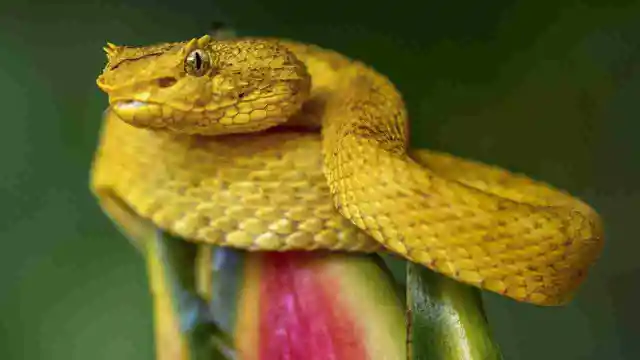
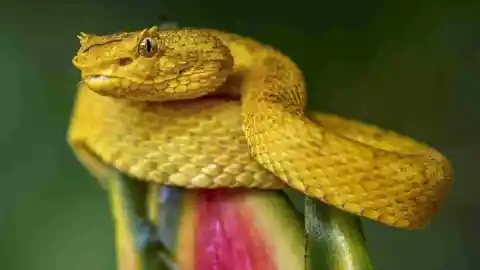
The golden lancehead usually grows to just a little over 2 feet long. But some have been seen at almost double that. And if that isn’t enough to scare you, these snakes have a tail so long that they can move through trees. Luckily, they can't swim out of their island.
Why Don’t They Leave The Island?
The golden lancehead viper can’t swim. Other snakes, however, might find water suitable for their existence. This is the case of coral reef snakes, who live their whole lives in the sea. But because golden lanceheads don’t like to get wet, they have lived on this island for thousands of years.
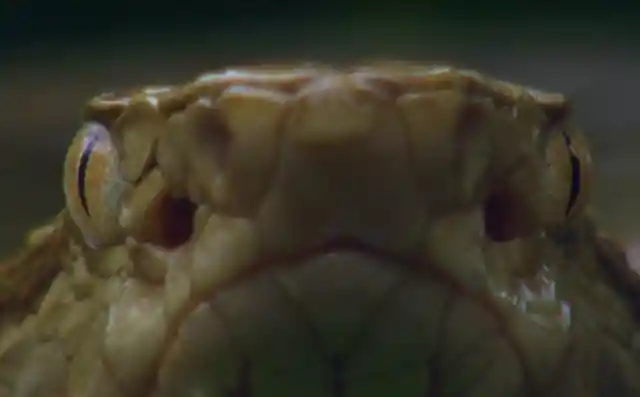
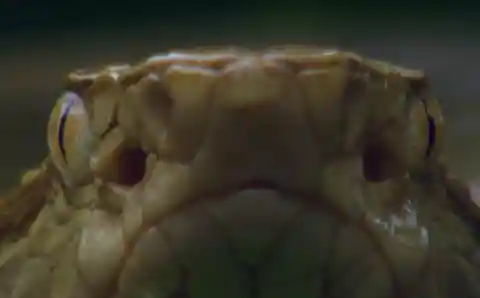
You might be wondering how it was that the golden lancehead had come to live on the island. Well, the story goes that pirates brought the serpents so they could use them to keep other pirates from touching their buried treasures.
The Real Reason
The truth is that about 11,000 years ago, the snakes became stranded on Ilha da Queimada Grande. It is believed that the island was cut from mainland Brazil when the level of the sea rose a little too much. Isolated on their new home, they evolved into their own distinct species over the next millennia.
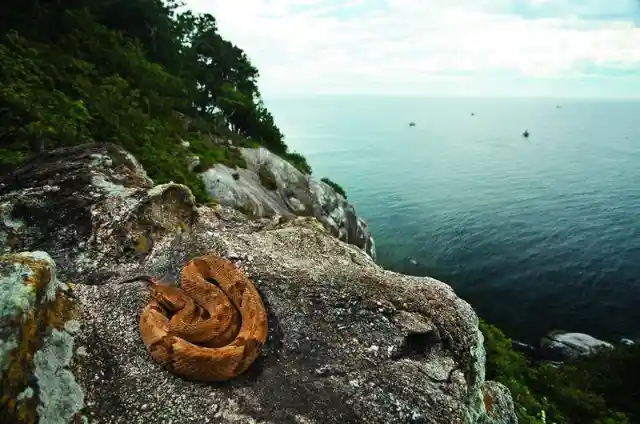
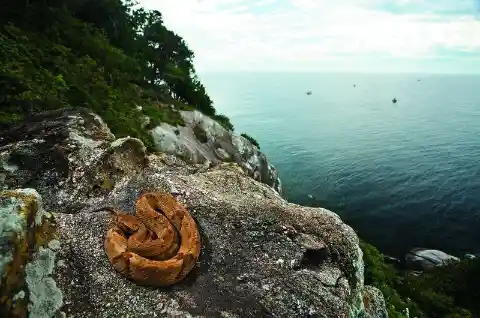
Since they live on such a remote island, the golden lancehead viper has no known predators. If they had, the youngsters could fall prey to some crawling or flying beasts. But when they grow up, they are completely safe. And that is the reason why they were able to reproduce so much.
What Do They Eat?
And just as there isn’t anyone who can challenge the viper in Ilha da Queimada Grande, there is almost nothing for them to eat either. Their primary food source are birds that land on the island during their seasonal migration, and the snakes have to climb up tall trees to get to them.
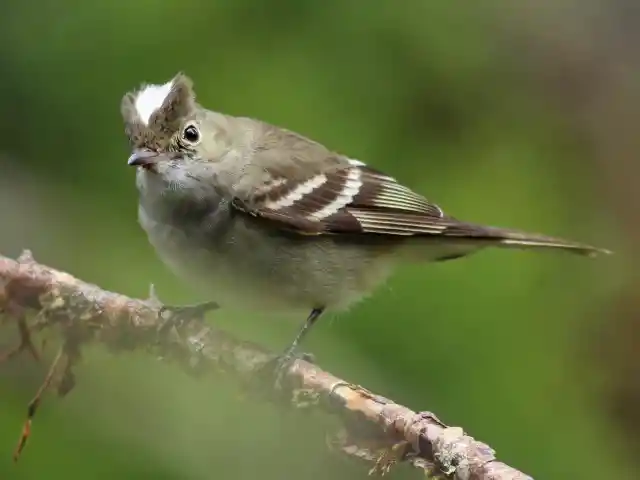
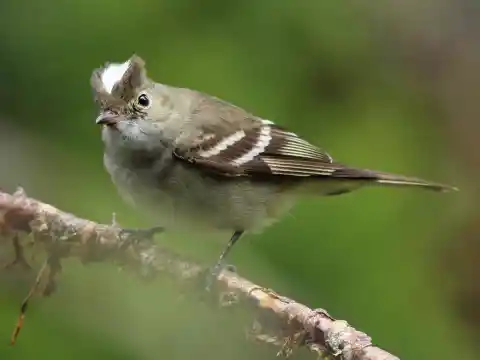
Even though 41 species of birds have been spotted on the island, the golden lancehead favorite treat is the white-crested Elaenia, which feeds in the same places as the snakes and southern house wren, when they are able to catch it.
Their Venom
Usually, snakes pursue their victim after biting them and patiently wait for their death. This snake species has adapted to produce a more lethal weapon since birds constitute a more challenging prey. As a consequence, their venom is not only more powerful but also fast-acting.


The golden lancehead’s poison is so strong that humans have a 7% chance of dying if you get a bite from one of these. Let’s say you are treated well, then the likelihood of death is still 3%. These snakes' venom could cause a person’s kidneys to fail and even their brain to bleed.
Studying the Venom
When the venom was studied, chemists found that it is so toxic that it can melt skin and that it is five times stronger than the venom of other Bothrops snakes. This is why the golden lancehead viper is among the world’s deadliest serpents. Despite knowing all this, some people couldn’t stay away from Ilha da Queimada Grande.
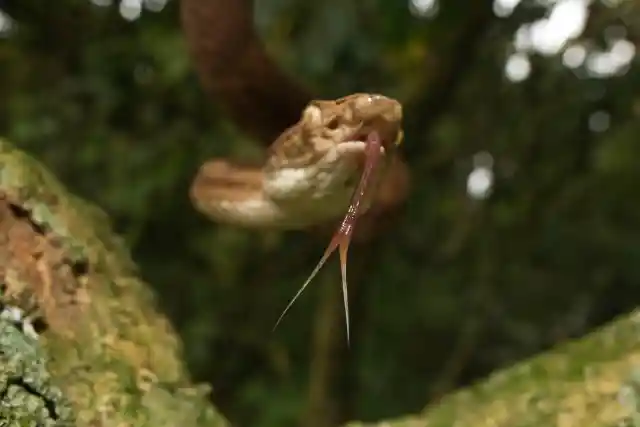
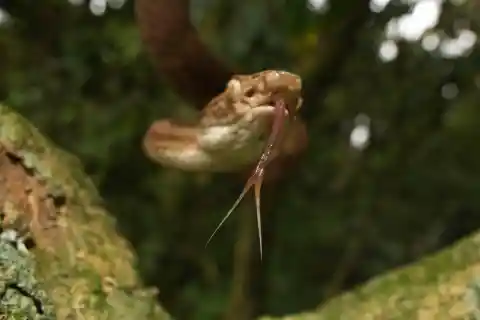
Among all the stories about the snakes’ deadliness, there is a terrifying one about a fisherman who visited the island to get some bananas. When he found out that the island was full of serpents, he ran to his boat, where he was found dead. And he wasn’t the last explorer who was tented by the island…
The Lighthouse
On the island, there is a lighthouse that would warn sailors about its rocky shoreline. It is believed that a long time ago, a few people actually lived there for a while. They used to tend to the lighthouse between 1909 and the 1920s until something happened...
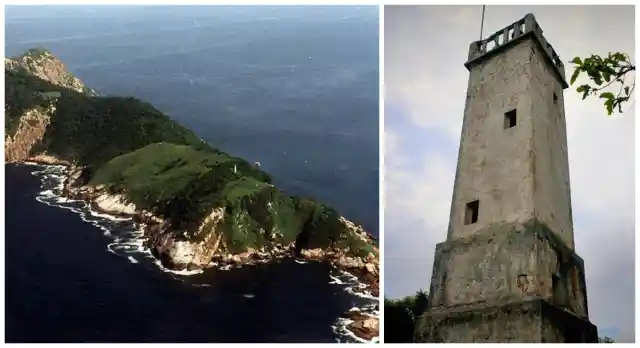
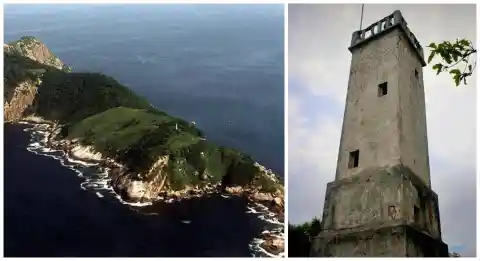
Apparently, a bunch of vipers slithered their way into the lighthouse keeper’s home one night. It is said that he and his family were all killed by the snakes. And what’s more, when rescuers arrived to look for the family, they were killed too.
A Later Visit
That story may be a myth, but the location is still a threat to this day. The Vice magazine staff were in for an unpleasant surprise when they accompanied the Brazilian navy to the lighthouse. Apparently, the magazine’s editor in chief was sitting on a box in the lighthouse, and moments later, a snake slithered out of it. Luckily, nothing happened.
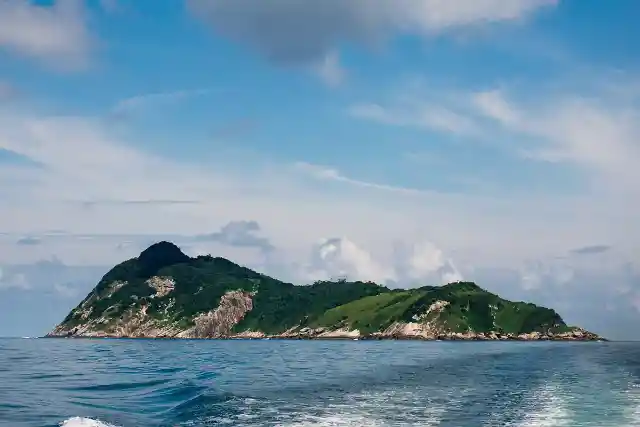
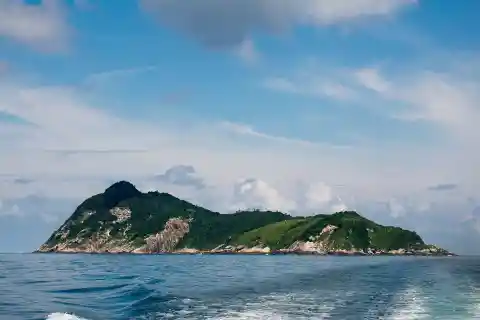
The lighthouse on Ilha da Queimada Grande now works automatically since no one lives there. The Brazilian Navy forbids everyone from visiting the island. Since the 1920s, very few people have been able to step foot on Snake Island; however, some people are brave enough to make the eight-hour trip.
Scientists
Among the brave people who enter the island are Brazilian servicemen because the navy is responsible for taking care of the lighthouse. Since the island and the snakes who live on it are essential to science, some researchers are permitted to study the snakes, and sometimes journalists go along.
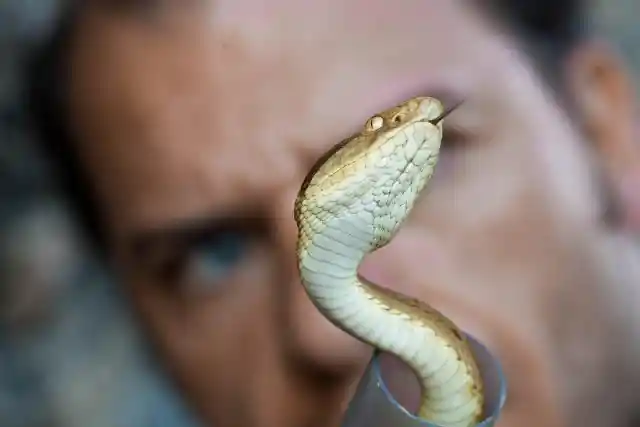
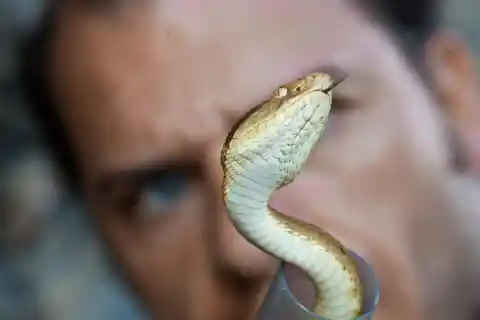
Scientists spend their time on the island looking at the snakes. And since the Snake Island is not a natural habitat for vipers, scientists keep the species going. The researchers look at what parts of the island the snakes inhabit and also restore some of the island's vegetation.
How Scientists Work
The experts who visit the island regularly work in small groups when tracking the serpents. They try to capture vipers, and when they do, they measure their weight and length and inject a tag before letting them go.
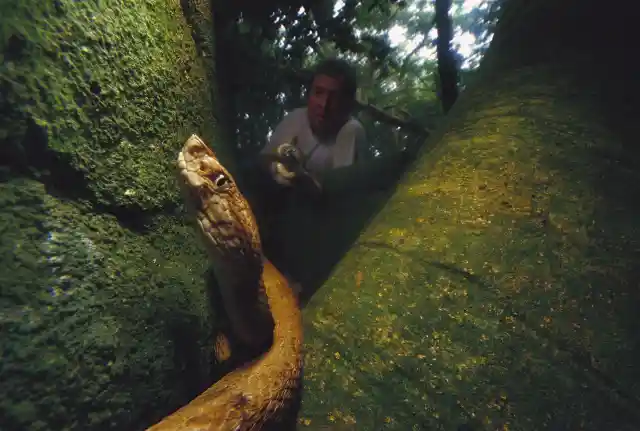
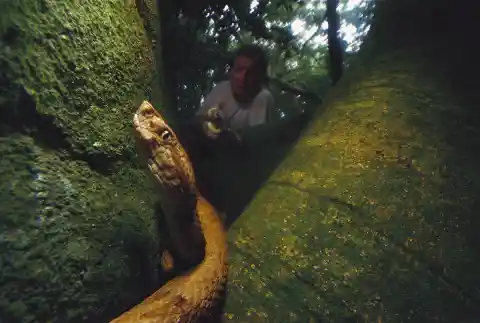
Some of the precautions that the scientists have to take are dressing appropriately, being aware of slithering serpents and handling the snakes with specialized equipment designed to keep them safe. For the authorities to let anyone onto the island, there has to be a doctor with them.
The Brave Photographer
Photographer João Marcos Rosa has visited the island three times to try and snap images of the snakes and their habitat, and he hasn’t been put off by the risks posed by the vipers yet. You can see some of this brave man’s pictures right here!


Rosa saw the snakes at terrifying close proximity when he traveled to Ilha da Queimada Grande with a group of scientists for four days. He later explained: “It is easy to find the snakes. As soon as you leave the rocks and start walking in the middle of the trees, you will always find them.”
The Four-Day Visit
Rosa and the team found hundreds of snakes and basically saw one every time they turned around. They had 48 encounters with individual snakes during a trip they made to the uppermost part of the island.
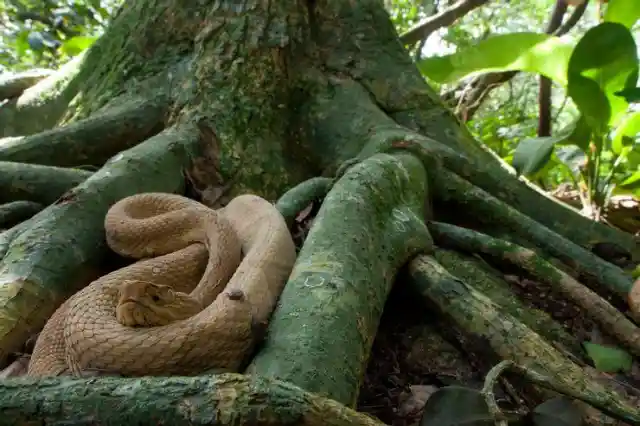
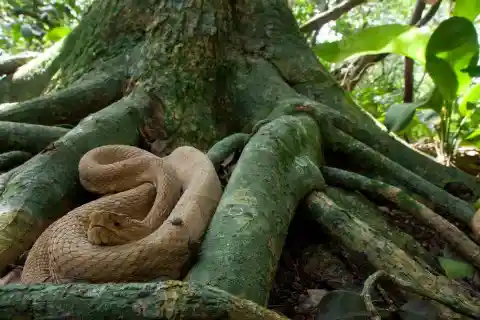
Rosa would get very close to the snakes sometimes to get the best photos he could. It was a risk he was willing to take just to get the perfect shot.
Biting Records
On their visit to Ilha da Queimada Grande, Rosa and the researchers took some precautionary steps. They had to avoid getting bitten at all costs. “We had to use protections for our legs and be very careful where we put our hands not to grab a snake,” Rosa explained.

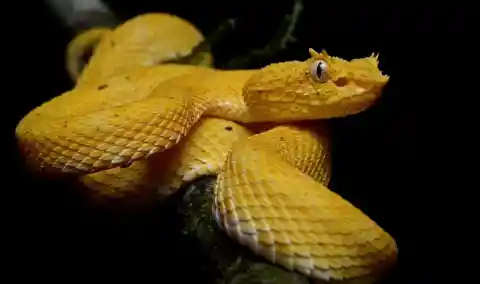
And luckily, those precautions were effective for everyone since there is no official record of a viper biting a human on the island these days. However, there are other lancehead snakes that are deadly and are actually responsible for nine out of ten snakebites in Brazil.
Illegal Visitors
Regardless of the snakes’ dangerous reputation, some travelers still make their way to the island illegally. These “bio pirates” go to the island to capture the vipers to sell them later in the black market. The price for just one snake can be $30,000.
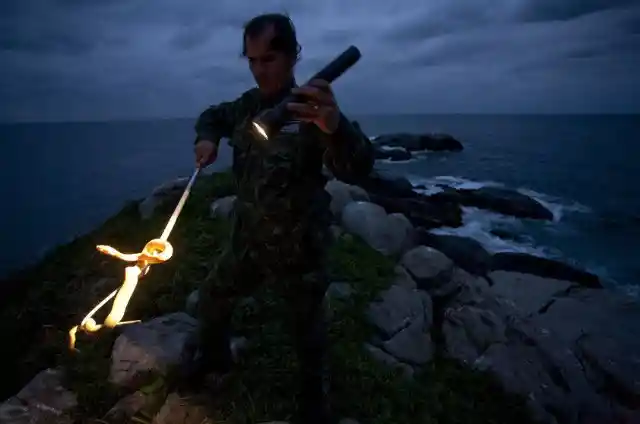

There are also claims of corruption. Some law enforcers who are in charge of capturing pirates allegedly accept bribes to let pirates into the island. A smuggler that goes by the name of Juan told Vice that even some authorities may be involved in smuggling.
An Endangered Species
The lancehead viper is one of Brazil's endangered species due to food competition and smuggling. It was suggested by a 2008 survey that there were no more than 4,000 of these snakes on the island.
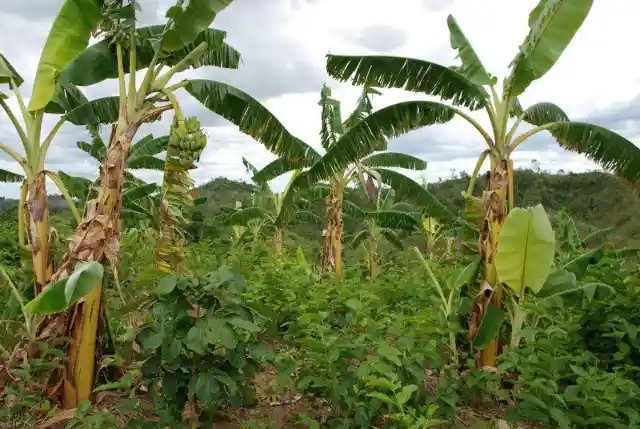
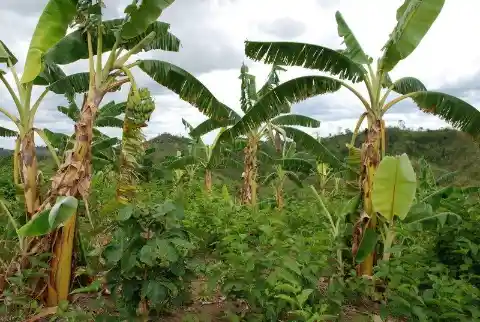
There is another reason for these snakes’ endangered status. In Portuguese, the island name Ilha da Queimada Grande means “Island of the Great Burn.” This peculiar name originated when people cleared the land by burning the rainforest when trying to create a plantation for bananas there. This likely killed a large number of serpents.
The Snakes’ Purpose
Marcelo Duarte, a biologist who has been to the island on 20 occasions, said that there is probably one snake for every 11 square feet of the island. This means that if you’re there, you are within three feet of a snake.

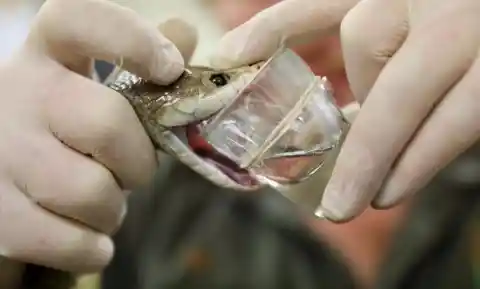
In 2014, Duarte told Smithsonian that the golden lancehead viper yields a significant medicinal value. According to him, the snake’s venom may assist with blood circulation, clotting, and heart disease.“We are just scratching this universe of possibilities of venoms,” Marcelo said.
The Poachers’ Clients
This potential to have a medicinal value may be why people pay thousands for just one snake, so they can get the venom and patent it. Some individuals have even offered cash to the scientists in exchange for a live specimen.

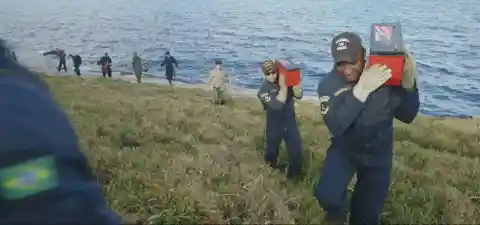
Keeping all this in mind, Ilha da Queimada Grande will never be a tourist destination. When the journalists from Vice magazine visited the island, they found out that snakes are actually just one of the weird animal species found on the island.
Other Species
During their trip to the island, Vice magazine’s staff slept among locusts and giant cockroaches. They probably don’t plan to revisit any time soon.
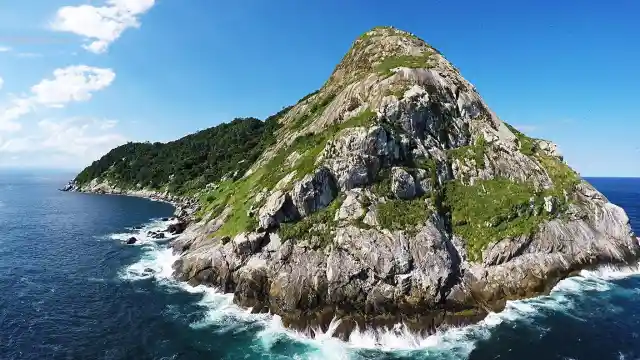

Even though it is not impossible to sneak onto the island breaking the law in the process, it’s not a good idea. If you want to, you can see the snakes at Duarte’s Butantã Institute in São Paulo or at that same city’s zoo, where you can find five of the venomous reptiles.